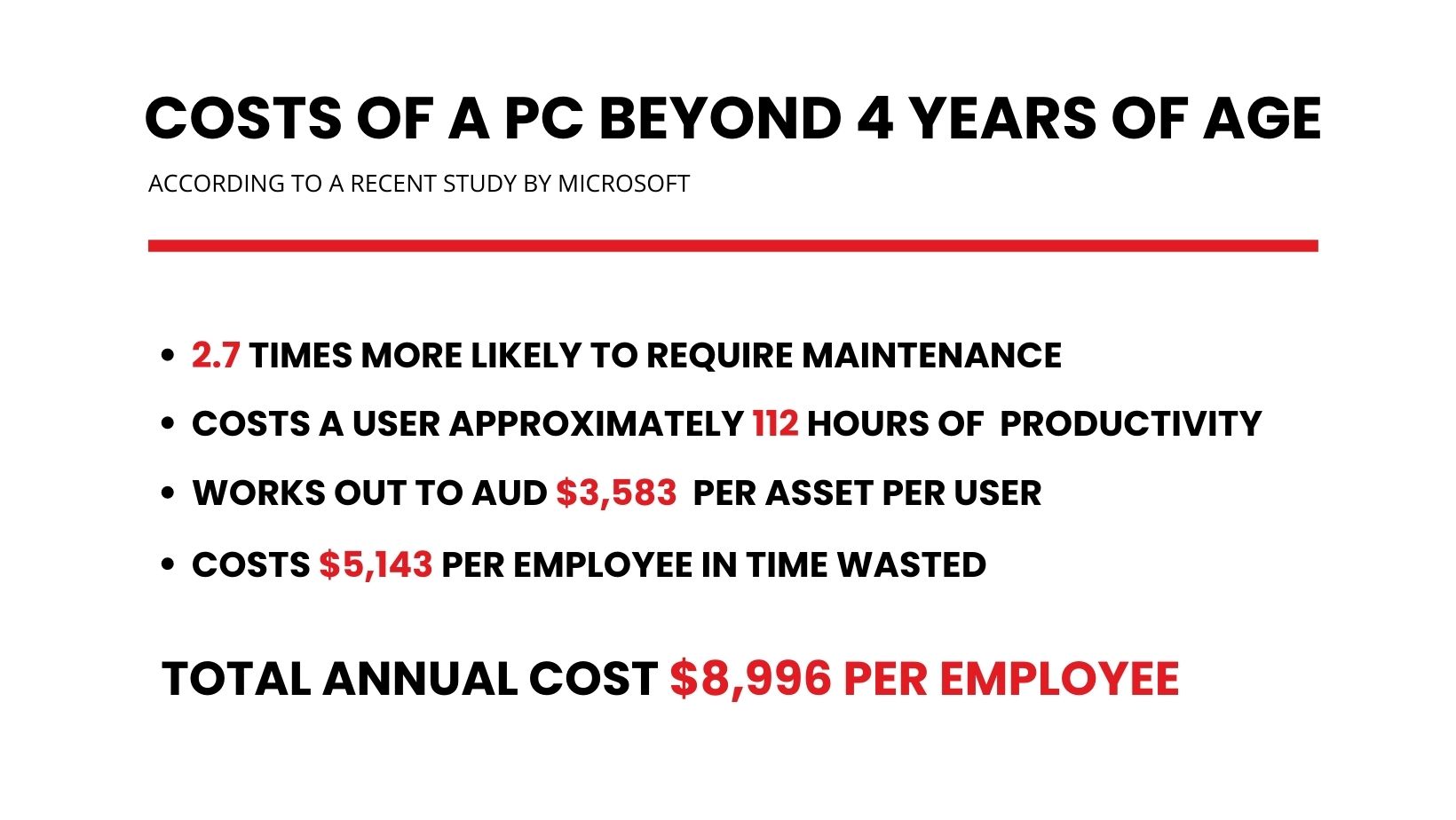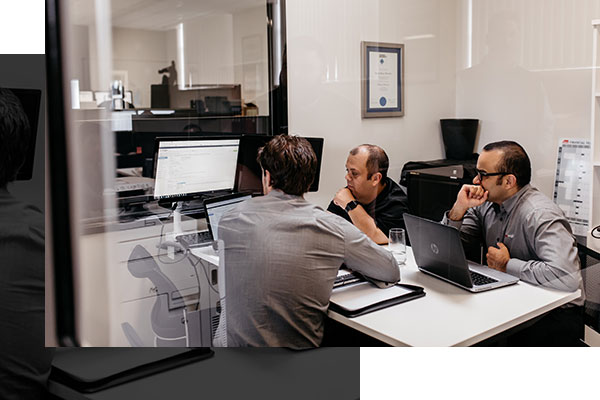The struggle is real. As an IT Consultancy Firm, we know there are few things more frustrating than a slow and sluggish computer. Whether it is your screen freezing, buffering for days, patchy zoom meetings or apps loading forever, slow computers put a costly dent in productivity. This is annoying for staff and damaging to your bottom line. More importantly, if your efficiency is compromised because your assets are underperforming, client relationships may suffer.
As a business owner, the reluctance towards what seems to be a neverending investment in hardware upgrades is understandable. “Why aren’t things made to last?” is a lament we hear often. Technology has always been a fast-moving industry and while the demands to keep up with the latest innovations can be hard on the budget, failure to upgrade hardware will cost you more in the long run.
The Cost of Computer Downtime
Slow computers cause downtime and downtime costs real dollars. Every moment you or a staff member has to restart a computer, rejoin a meeting or reload a program, you’re losing money. From a time management perspective, if a tech issue forces a work interruption, it can take up to ten minutes to refocus on the task at hand. These distractions can really add up if they are happening on multiple occasions across your team. This productivity fallout has a knock-on effect that results in slower delivery and compromised efficiency.
Costs of a PC beyond 4 years of age

Older Assets = Lower Security
Obsolescence could cost you more than any sort of issue-related downtime. Ageing hardware can compromise entire systems. The latest innovations in cybersecurity software may be too advanced to work on dated assets. This lack of resilience can create vulnerabilities that opportunistic online criminals are only too eager to exploit.
Aged systems may also use older software that has otherwise been retired. The longer software remains stagnant and without patches or upgrades, the longer cybercriminals have to exploit weaknesses. At worst, compromised security in obsolete hardware and software could see you become victim to a data breach. This could see your company’s or your client’s financial details leaked and sold, your data being held to ransom and a potential system shut down.
The Solution? Lifecycle Asset Management
There’s no need to spend a fortune upgrading all your devices at once. Instead, get your managed IT provider to help you keep an active asset lifecycle register that details the procurement and disposal stages of each device. They can help you track each of your technology assets and send you regular reports so you know exactly when and where to upgrade.
If you’re worried that asset lifecycle management will mean you need to spend more money more often on technology, don’t worry. The main function of asset lifecycle management is to maximize the value of your IT assets and replace them when needed.
Need help?
Evologic has helped a wide range of businesses implement asset lifecycle management plans to help identify the need for replacements and upgrades. If you’d like help with your asset management, contact us or call 1300 887 778.


